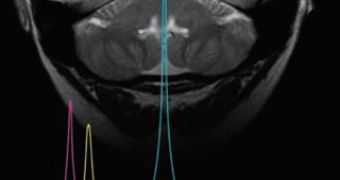A few months ago few would have agreed that the adult brain keeps on forming new brain cells. But after researches confirmed the discovery first made in 1998, now they have at their disposal a technology to view stem cells in the brains of living animals (humans included) allowing the researchers to watch neurogenesis (brain cells genesis).
"I was looking for a method that would enable us to study these cells through[out a] life span," said Mirjana Maletic-Savatic, an assistant professor of neurology at Stony Brook University in New York State, who specializes in neurological conditions like cerebral palsy more common in premature and low-weight babies.
"The new technique will enable me to track children at risk by monitoring the quantity and behavior of these so-called progenitor cells in their brains." said Maletic-Savatic.
The team uses a chemical biomarker unique to immature neurons, a type of fatty acids or lipid protein. The research team collected samples of immature neurons, mature neurons and glia cells (brain auxiliary cells) from embryionic rat brains and adults rat brains.
The team injected stem cells into a rat's brain cortex, where neurogenesis does not normally take place. An electric current went through the animals' brains; this is known to induce neurogenesis in the hippocampus (the other only brain structure known to produce new neurons is the subventricular zone).
NMR spectroscopy was employed to detect pictures of the living rats' brains and an analytical method enables the team to decode the biomarker levels in the cortex following a neural stem cell injection. Animals receiving electric shocks had also high levels of the biomarker in the hippocampus.
Human trials were made on 11 healthy subjects, aged 8 to 35, who spent 45 minutes in an NMR scanner. Hippocampus had much more of the biomarker than the cells in the cortex and older subjects presented lower levels of the biomarker than younger subjects (matching previous researches).
"This is the first technique that allows detection of these cells in the living human brain," said Maletic-Savatic.
"It seems that they are measuring proliferation rather than maturation based on their results. It will be important for them to knock down neurogenesis in a mouse and show that [this] signal disappears to confirm the causal link with neurogenesis." said Fred Gage, a genetics professor at the Salk Institute for Biological Studies in La Jolla, Calif., member of the team which in 1998 signaled for the first time neurogenesis in the adult human brain.
The new technology could come with more rapid diagnosis of many psychiatric and neurological diseases. A 2006 research showed that antidepressants could trigger the generation of new brain cells.
"It is clear that this biomarker may have promise in identifying cell proliferation in the brain, which can be a sign of cancer. In other patients, it could show us how neurogenesis is related to the course of diseases such as chronic depression, bipolar disorder, Alzheimer's, Parkinson's, MS, and post-traumatic stress disorder." said co-author Grigori Enikolopov, an associate professor of molecular biology at Cold Spring Harbor Laboratory in Long Island, N.Y.

 14 DAY TRIAL //
14 DAY TRIAL //